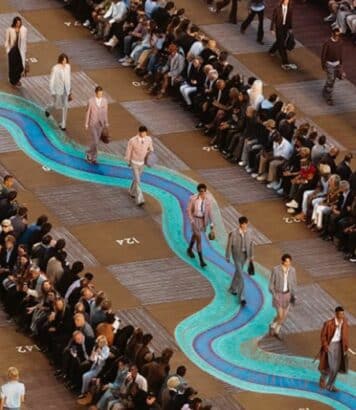Paris metro stations: 2 candidates for the title of world’s most beautiful to visit

Ranked among the most beautiful in the world, Paris metro stations combine art, technology and living history. Day after day, they offer a unique panorama of the underground capital.
Planning a visit or a simple daily commute? Here are some practical tips to help you look at these stops differently, without losing sight of the essential.
Underground treasures ranked among the most beautiful in the world
In several recent awards, Parisian stops have taken pride of place. The focus is on architecture, lighting, signage and emotion. What’s more, these criteria recognize the value of over 120 years of know-how that continues to evolve.
Arts et Métiers comes to mind, with its science-fiction-style copper cladding signed at the end of the 20th century. At Concorde, the Declaration of Human Rights is inscribed in blue letters on the tiles, providing a memorable corridor-text. Louvre-Rivoli, with its collection-inspired window displays, and Bastille, with its frescoes, confirm that Paris metro stations are galleries in the sky.
“Underground, Paris exhibits a museum in motion.
From artistic prowess to engineering
Beauty does not preclude performance, quite the contrary. Abbesses impresses with its
Modernity is showcased on an automated line, designed to reduce waiting times and inconvenience. In addition, clear signage and accessibility efforts are progressing station by station. As a result, the passenger experience gains in comfort without sacrificing style.
- Prefer off-peak hours to appreciate the architecture.
- Follow the color codes to limit detours.
- Keep to authorized areas when taking photos.
- Locate the numbered exits to save time.
- Anticipate connections with the map in your pocket.
Itineraries for a curious weekend
A north-central route links Arts et Métiers to Concorde. So you can alternate copper, typography and urban perspectives in just a few stops. What’s more, this red thread is a reminder of how Paris metro stations function as gateways to complementary neighborhoods.
Then head for the Île de la Cité, where the Cité station surprises with its greenish lights and island atmosphere. Then, a short walk above ground extends the visit to the quays of the Seine. However, a detour to Bastille sheds light on another, more historical chapter.
At the end of the day, the aerial line over the Seine offers striking views. The ballet of trains reveals another theater, made of steel, bridges and reflections. As a result, this alternation of outside and inside is reminiscent of the variety of Paris metro stations.
Art lovers can easily combine stops and museums. Close to Louvre-Rivoli, transitions between underground showcases and indoor masterpieces are natural. The coherence of the theme also reinforces the readability of the journey.
When to go and how to prepare
If you want to enjoy your visit in peace and quiet, aim for weekday mornings. Less traffic means more time for details. In short, photography and observation lend themselves better.
Budget-wise, day passes are ideal for a dense circuit. So you can hop from one line to the next without counting the fare. What’s more, the itinerary remains flexible, which helps you cover several Paris metro stations.
Figures, heritage and guided tours
The current network comprises over 300 stations and 16 lines. So every journey weaves a link between mobility and culture. As a result, the underground city coherently complements the surface city.
In terms of heritage, some of Guimard’s signature bouches remain and are maintained. At Concorde, the typographed installation dates back to 1989, while Arts et Métiers was redesigned in 1994. These milestones help to situate the evolution of Paris metro stations over time.
Guided walks are organized on specific dates, sometimes during the European Heritage Days. In this way, cultural mediation opens up areas or subjects that are rarely dealt with on a day-to-day basis. In short, these formats emphasize the reading of spaces and works of art.
The future is written with extensions and new connections. Construction projects are reinforcing interconnections with major metropolitan projects. As a result, the map is becoming denser, and metro stations in Paris are becoming more closely meshed and more accessible.





No comments
Post a comment
Always participate in accordance with the law and with respect for others.